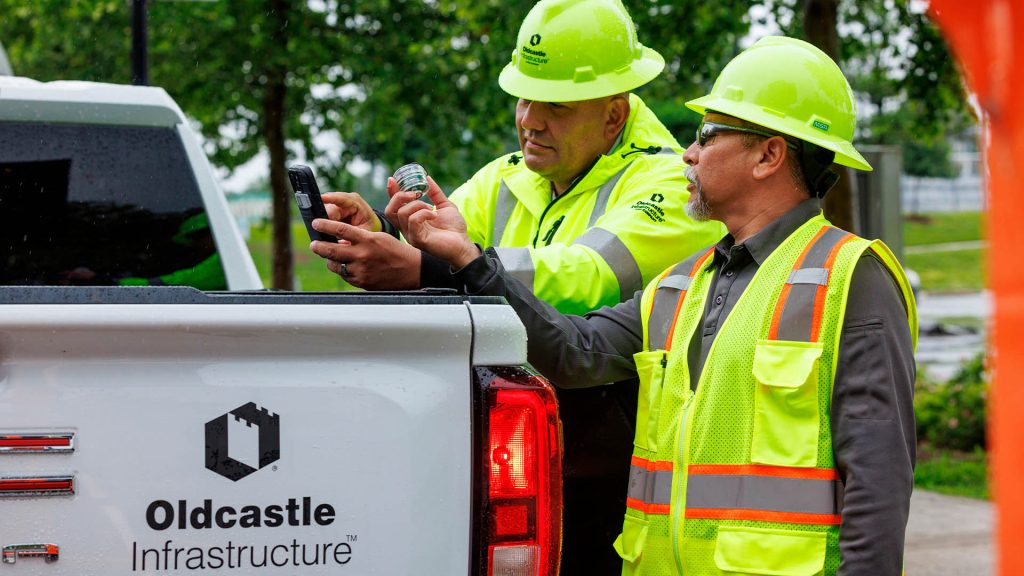Small leaks from water networks are not only a major headache for utilities providers, but also have the potential to lead to major outages and significant disruption for the communities they serve – but a two-pronged approach to technology deployment can help, according to Peter Delgado of Oldcastle Infrastructure
In late September 2025, thousands of residents in Novi, Michigan and the surrounding area were forced to contend with days of disruption following a severe water main break. Some homes and businesses faced total water outages. Others were issued a ‘boil water advisory’, recommending they boil the water from their taps due to potential contamination that might make it unsafe to drink.
This kind of scenario is all too common and causes real headaches for communities. It’s hugely damaging for utility providers, too. Alongside the significant costs of a major repair job, they are also likely to experience an angry backlash from customers and, in some cases, financial penalties from regulators.
But even more problematic for utilities is the impact of slow but steady leakage of water from their networks. According to estimates from strategy firm McKinsey, some 14% to 18% of total treated potable water in the US is lost through leaks before it even reaches customers. In England, the figure is around 19%, according to a 2024 report by the UK Environment Agency. In other words, it simply makes sound business sense to catch and fix small leaks before they lead to major problems.
Find this article plus many more in the September / October 2025 Edition
👉 Subscribe FREE here 👈
Technology can help, but to tackle leaks effectively, utilities need to take a two-pronged approach to its deployment, according to Peter Delgado, director of commercial excellence at Oldcastle Infrastructure, which is part of CRH, a global provider of building materials for transportation and critical infrastructure.
Says Delgado: “You need prediction technology, so that you know where leaks are most likely to occur across the many miles of network that you manage. And you need leak detection technology that enables you to pinpoint the location and size of leaks.”
Oldcastle Infrastructure’s CivilSense solution, he claims, is the only solution to enable customers to adopt this bilateral approach and address both sides of the coin. To do so, Oldcastle Infrastructure relies on whitelabelling technology from two other companies and combining these with its CivilSense software platform.
First, CivilSense uses AI-driven predictive analysis from Boston, Massachusetts-based VODA.ai to flag sections of a network that are at higher risk of pipe failure or breakage, based on its analysis of geographic information systems (GIS), climate and infrastructure asset data. These analyses include the ranking of different areas of often vast water networks by risk.
Next comes the deployment by frontline teams of acoustic sensors from Bicester, UK-based FIDO Tech. These sensors detect, locate and size actual leaks in real time and are magnetically attached to valves via manholes in areas of particular concern for a monitoring period typically lasting a day or two, but sometimes up to a week, Delgado says. They are engineered to ‘listen’ for the particular sounds and vibrations produced by a leaking pipe and often at levels far beyond the limits of human hearing and AI-driven analysis of that data can pinpoint a leak to an accuracy of around three metres, says Delgado. That data is also fed back into CivilSense.
Finally, CivilSense is the platform where both types of intelligence – predictive analytics and leak detection – are aggregated and visualised for utility workers, in the form of dashboards and maps accessible from any device, including the smartphones and tablets typically used by workers in the field. In this way, utilities can respond proactively to leaks before they become severe, prioritise repairs, allocate frontline resources to repair jobs and plan preventative maintenance – not to mention avoid the cost, waste and disruption of digging in a location where no leak actually exists.
It’s important to remember that much of this infrastructure is hidden away, deep underground and that’s part of the problem, says Delgado. “The ‘out-of-sight, out-of-mind’ nature of leaks can lead to a reactive mindset, but that’s no solution to the challenges that utilities increasingly face.” Water systems are ageing in the US and many other countries, he points out, with infrastructure such as pipes and valves fast approaching the end of its shelf-life.
Couple that with the impacts of rising demand for water among consumers, extreme weather events and ageing workforces in which many skilled utilities engineers are nearing retirement, he says, and you’ve got a perfect storm that simply demands a more proactive mindset.
“Without more innovative solutions, without new technologies, the current approaches used by utilities providers to deal with leaks will soon prove hopelessly inadequate,” he warns.
Indeed, if you ask the people of Novis, Michigan, they would probably tell you that the utilities industry reached that point some time ago.








